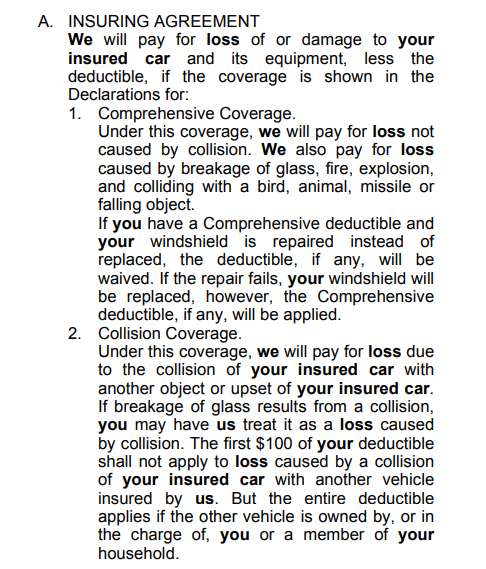The Main Principles Of Pacific Prime
The Main Principles Of Pacific Prime
Blog Article
The 10-Minute Rule for Pacific Prime
Table of ContentsPacific Prime Fundamentals ExplainedThe Ultimate Guide To Pacific PrimeUnknown Facts About Pacific PrimeGetting My Pacific Prime To WorkThe Ultimate Guide To Pacific Prime

This is because the information were accumulated for a period of solid economic performance. Of the approximated 42 million individuals that were uninsured, almost regarding 420,000 (regarding 1 percent) were under 65 years of age, the age at which most Americans end up being eligible for Medicare; 32 million were grownups in between ages 18 and 65, about 19 percent of all grownups in this age; and 10 million were kids under 18 years old, about 13.9 percent of all kids (Mills, 2000).
These quotes of the variety of individuals uninsured are created from the yearly March Supplement to the Existing Population Study (CPS), performed by the Census Bureau. Unless otherwise noted, national estimates of people without medical insurance and proportions of the populace with various type of coverage are based on the CPS, the most widely utilized source of quotes of insurance policy protection and uninsurance prices.
Not known Factual Statements About Pacific Prime

Still, the CPS is specifically useful since it produces annual price quotes relatively quickly, reporting the previous year's insurance coverage estimates each September, and due to the fact that it is the basis for a constant set of price quotes for even more than twenty years, permitting evaluation of fads in insurance coverage gradually. For these reasons, along with the extensive usage of the CPS in various other studies of insurance protection that exist in this record, we depend on CPS quotes, with constraints noted.

The estimate of the number of without insurance people increases when a population's insurance coverage standing is tracked for numerous years. Over a three-year period beginning early in 1993, 72 million individuals, 29 percent of the U.S. https://www.indiegogo.com/individuals/37416909. population, lacked insurance coverage for a minimum of one month. Within a single year (1994 ), 53 million people experienced at least a month without coverage (Bennefield, 1998a)
Six out of every 10 without insurance grownups are themselves used. Although working does boost the chance that and one's household members will certainly have insurance policy, it is not a warranty. Even members of households with 2 full time wage earners have almost a one-in-ten chance of being without insurance (9.1 percent without insurance rate) (Hoffman and Pohl, 2000).
9 Simple Techniques For Pacific Prime
New immigrants account for a substantial percentage of individuals without medical insurance. One analysis has connected a considerable part of the current development in the dimension of the united state uninsured population to immigrants who showed up in the nation in between 1994 and 1998 (Camarota and Edwards, 2000). Current immigrants (those that came to the United States within the past 4 years) do have a high price of being uninsured (46 percent), however they and their youngsters represent just 6 percent of those without insurance across the country (Holahan et al., 2001).
The connection between health insurance policy and access to care is well developed, as documented later in this chapter. The relationship between wellness insurance policy and health and wellness end results is neither straight neither basic, an extensive clinical and wellness solutions study literary works links wellness insurance policy protection to improved accessibility to care, far better quality, and enhanced individual and populace wellness condition.
Levels of advice analysis for examining the results of uninsurance. It concentrates particularly on those without any kind of wellness insurance coverage for any size of time.
What Does Pacific Prime Mean?
The issues dealt with by the underinsured are in some aspects comparable to those encountered by the without insurance, although they are usually much less severe. maternity insurance for expats. Uninsurance and underinsurance, however, include definitely different policy issues, and the strategies for resolving them might vary. Throughout this research study and the five reports to follow, the primary focus is on persons without any medical insurance and thus no help in paying for healthcare past what is offered with charity and safety and security internet organizations
Health insurance policy is a powerful factor affecting invoice of treatment because both individuals and doctors reply to the out-of-pocket price of services - https://stieuys-rhuiets-scriank.yolasite.com/. Wellness insurance policy, however, is neither required nor adequate to obtain accessibility to clinical solutions. Nevertheless, the independent and direct effect of wellness insurance policy protection on access to health services is well developed.
Others will get the healthcare they require even without wellness insurance coverage, by spending for it expense or seeking it from carriers who provide treatment cost-free or at very subsidized rates. For still others, wellness insurance alone does not ensure invoice of treatment as a result of various other nonfinancial obstacles, such as an absence of wellness care carriers in their community, restricted accessibility to transportation, illiteracy, or etymological and cultural differences.
Some Known Questions About Pacific Prime.
Formal study about without insurance populations in the USA dates to the late 1920s and very early 1930s when the Board on the Price of Healthcare generated a series of reports about funding physician workplace check outs and hospital stays. This problem became significant as the numbers of clinically indigent climbed up throughout the Great Depression.
Report this page